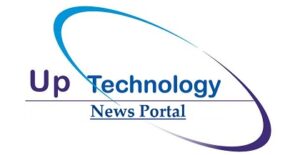Contracts are an inevitable part of business. From major supplier agreements to mundane lease contracts, they all need to be managed and controlled in some way. But with so many different contracts, how can you ensure your team remains in control of all contracts, and everyone has the information they need when they need it – saving everyone valuable time? Contract Lifecycle Management software is the answer.
What is contract lifecycle management?
Contract lifecycle management (CLM) is a process that helps organizations manage their contracts throughout the entire contract life cycle. This includes the initiation of a contract, the negotiation and signing of a contract, the administration and management of a contract, and the fulfillment and termination of a contract. Contract lifecycle management software helps ensure that your team remains in control of all contracts, and everyone has the information they need when they need it – saving everyone valuable time.
What are the benefits of contract lifecycle management software?
Contract lifecycle management software allows businesses to streamline their contract management process. By doing so, businesses can save time and money. CLM software centralizes all contract information in one place. This way, everyone involved in the contract process has access to the most up-to-date information. CLM also automates contract-related tasks, such as reminders for renewals and expiration dates. This reduces the chance of human error and ensures that deadlines are met. Additionally, CLM software helps businesses track spending and performance against contract goals. All of these benefits work together to help businesses run more efficiently.
Who can benefit from contract lifecycle management?
Contract lifecycle management software is beneficial for businesses of all sizes. By having a streamlined system in place, you can make sure that everyone who needs access to contracts has it when they need it. This eliminates the need for multiple people to be emailing and calling each other to track down the latest version of a contract, which saves everyone time and energy. Additionally, CLM software ensures that all contracts are properly filed and organized, which can be extremely helpful if you need to reference a contract or Agreement at a later date.
How to get started with contract lifecycle management
Contract lifecycle management (CLM) software is designed to help you manage your contracts throughout their entire lifecycle. This can include everything from negotiating and drafting contracts to storing them electronically and tracking contract performance. Implementing CLM software can save your team time and money by ensuring everyone has the information they need when they need it. Here are a few simple steps to get started:
- Evaluate your current contract management process.
- Assess your business needs and determine which features are most important to you.
- Choose a CLM software that meets your needs.
- Implement the software and train your team on how to use it.
- Start using the software to streamline your contract management process.
Contract lifecycle management vs other contract management software
Contract lifecycle management software is different from other contract management software in that it streamlines the entire contract lifecycle. CLM software ensures that your team remains in control of all contracts, and everyone has the information they need when they need it – saving everyone valuable time. In contrast, other contract management software may only manage a subset of the contract lifecycle, or be less comprehensive in terms of features and functionality. As a result, CLM software can provide a more efficient and effective solution for managing contracts.
Conclusion
Contract lifecycle management software ensures your team remains in control of all contracts, and everyone has the information they need when they need it – saving everyone valuable time. Contract lifecycle management software is the best way to manage your contracts, as it allows you to keep track of all contracts in one place and makes it easy for everyone on your team to access the information they need.




